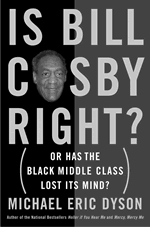 Is Bill Cosby Right? Or Has the Black Middle Class Lost Its Mind?
Is Bill Cosby Right? Or Has the Black Middle Class Lost Its Mind?
Michael Eric Dyson. (Basic Books).
As part of a diatribe against a beloved, thoughtful television personality, the Avalon Foundation Professor in the Humanities at the University of Pennsylvania incessantly misleads the reader about the country’s schools. Contrary to what Michael Dyson asserts, “profound resegregation of American schools” has not happened; “telling differences between how much money suburban and urban schools spend on each student” do not exist; African American dropout rates are not 17 percent (but closer to the 50 percent figure that Cosby is accused of getting wrong); and the existence of the phenomenon of “acting white,” far from being “a theory that is in large part untrue,” has been affirmed by a major new study.
These and other misstatements of fact, tales, and quotes out of context are used to impugn the reputation of a public figure who dared to ask black parents and students to exercise a greater sense of responsibility. Dyson’s attack is relentless, though he takes time out to massage his ego with four pages filled with laudatory e-mails said to have been received from juvenile offenders after they had been visited at a detention center. Are young people that uniformly enthusiastic about a university professor? Or did Dyson shrewdly choose his quotes the way writers of dust-jacket copy do?
If Dyson’s handling of education, which ranges from selective to misleading to simply false, is an indication of what he gets wrong on other subjects in Bill Cosby, then this is a book-burner’s delight.
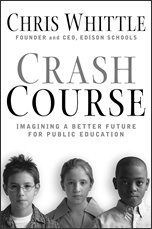 Crash Course: Imagining a Better Future for Public Education.
Crash Course: Imagining a Better Future for Public Education.
Christopher Whittle. (Riverhead Books).
Chris Whittle launched Edison Schools in 1991, having already prospered with “Channel One,” which introduced a specialized (and commercialized) television news show into U.S. high schools.
Edison now operates dozens of schools and provides full- and part-time education services to hundreds of thousands of children. It is the biggest and best-known of America’s burgeoning education-management organizations (EMOs).
In this book, Whittle distills the lessons he has learned about K–12 education and the changes it needs, lessons that he presents with self-assuredness and passion. (Those who have seen him in action hail him as a preternaturally gifted salesman.)
He goes from suggesting useful incremental changes in today’s school system to a dazzling visionary exercise in what that system could be like in 2030, built around very different sorts of school systems and “school companies.” Then he sketches a hugely ambitious federal law (the “Education Innovation Act of 2007”) to generate the R & D dollars and leadership to move K–12 education from incrementalism to transformation. You can skip the epilogue, though: 25 pages of hokey “letters to leaders” meant to motivate them for the changes ahead.
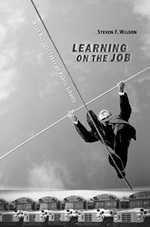 Learning on the Job: When Business Takes on Public Schools.
Learning on the Job: When Business Takes on Public Schools.
Steven F. Wilson. (Harvard University Press).
In this lucid and engaging analysis of six for-profit education-management organizations, including industry heavyweight Edison and the nonprofit KIPP, Wilson, who was forced out of his position as CEO of Advantage Schools by frustrated investors, is brutally honest about his former company’s mistakes. “We had been arrogant,” he writes, “and we were humbled.” He also proves to be a perceptive analyst of the industry. For all their differences in education philosophy and business strategy, EMOs faced a number of common obstacles: pressures to expand too rapidly and in the wrong places, difficulties finding and financing facilities, and vigorous union opposition.
Wilson remains a long-term optimist about the potential of EMOs to be an agent for reform in American education; he even believes they can turn a profit. But he doesn’t think this can happen until states adopt policies providing such organizations with access to capital for facilities at rates comparable to those available to traditional public schools.
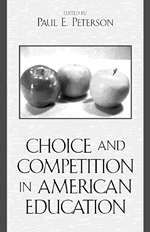 Choice and Competition in American Schools.
Choice and Competition in American Schools.
Edited by Paul E. Peterson. (Rowman and Littlefield).
To celebrate Education Next’s fifth anniversary, the editors have gathered 23 of the journal’s greatest hits and published them as a 250-page volume. The essays describe a wide range of efforts to inject choice and competition into American education. While some of the material on charter schools and vouchers will be familiar, it’s convenient to have these multifaceted offerings, which include everything from experimental research to first-person accounts, between two covers. Efforts to introduce choice and competition are not limited to choice only among schools. Several essays analyze the ways that market incentives and deregulation might be used to get and keep great teachers and principals. Most of the innovations described in this volume make perfect sense, yet face major political obstacles.
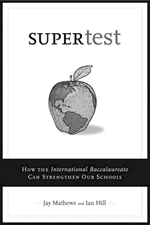 Supertest: How the International Baccalaureate Can Strengthen Our Schools.
Supertest: How the International Baccalaureate Can Strengthen Our Schools.
Jay Mathews and Ian Hill. (Open Court).
The author tells twinned stories, that of the birth and growth of the International Baccalaureate (IB) program around the world and the adoption of IB at a single Virginia high school. While the authorship credit is shared, the voice here is that of veteran Washington Post education reporter Mathews rather than that of Hill, deputy director general of the International Baccalaureate Organization. This is a piece of journalism, not organizational puff. It paints a careful history of the international efforts that gave birth to the IB Organization in 1967 and the growth of an IB system that today includes 1,100 high schools worldwide. The author is skeptical of those who question the organization’s politics (left-leaning?) and biases (Is it a disadvantage in college admissions?). However, Supertest touches on these questions only briefly and doesn’t spend much time on policy questions, larger implications, or lessons to be learned. Worth reading as a thoughtful, extended case study of an education system that caught the author’s eye as well as for its clear history of the little-understood IB.
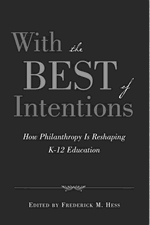 With the Best of Intentions: How Philanthropy Is Reshaping K–12 Education.
With the Best of Intentions: How Philanthropy Is Reshaping K–12 Education.
Edited by Frederick M. Hess. (Harvard Education Press).
This volume of insightful papers, first presented at an American Enterprise Institute conference last April, is better than best intentions. To those 11 AEI contributions (by such competent analysts as Bryan Hassel, Andrew Rotherham, Jane Hannaway, Tom Loveless, Leslie Lenkowsky, Richard L. Colvin, and Jay Greene) Hess has added perceptive introductory and concluding essays. Education philanthropy, he declares, is “disorderly, visible, and little studied.” Though dwarfed by public tax dollars, these gifts gain leverage from their own visibility and that of their benefactors, particularly the newer ones such as the Gates and Broad foundations. Hess ends with a thoughtful listing of five “challenges” that are “aggravated by the nature, ambition, and tactics of the emergent ‘new’ givers.” Well worth the attention of reformers and educators, not to mention philanthropists.


